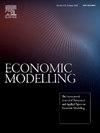流动性溢价与交易成本的形态
IF 4.7
2区 经济学
Q1 ECONOMICS
引用次数: 0
摘要
本文研究了竞争经济中富有的流动性交易者与流动性提供者交换股票的动态均衡。流动性交易者在下市场订单时面临买卖价差,价差与订单规模成比例上升,这里使用线性二次型交易成本建模。与最近的文献一致,由于流动性交易者的交易需求大幅减少,风险溢价比无摩擦市场大几倍。有趣的是,流动性溢价仅受交易成本结构的微弱影响。具体来说,即使交易成本中线性成分的权重从零上升到接近100%,它实际上仍然保持不变。交易成本对股票价格的影响主要来自于代理人及其平均交易频率的异质性,尽管交易成本结构发生了显著变化,但平均交易频率的变化却很小。本文章由计算机程序翻译,如有差异,请以英文原文为准。
Liquidity premium and the shape of transaction costs
This article investigates a dynamic equilibrium in a competitive economy in which wealthy liquidity traders exchange stock shares with liquidity providers. Liquidity traders face bid–ask spreads when placing market orders, with spreads rising proportionally to the order size, modeled here using linear–quadratic transaction costs. Consistent with recent literature, the risk premium is several times larger than in a frictionless market due to a considerable reduction in liquidity traders’ trading demand. Interestingly, the liquidity premium is only weakly affected by the structure of transaction costs. Specifically, it remains virtually unchanged even as the weight of the linear component in transaction costs rises from zero to nearly 100%. The influence of transaction costs on stock prices arises primarily from heterogeneity among agents and their average trading frequency, which changes only marginally despite significant variations in the structure of transaction costs.
求助全文
通过发布文献求助,成功后即可免费获取论文全文。
去求助
来源期刊

Economic Modelling
ECONOMICS-
CiteScore
8.00
自引率
10.60%
发文量
295
期刊介绍:
Economic Modelling fills a major gap in the economics literature, providing a single source of both theoretical and applied papers on economic modelling. The journal prime objective is to provide an international review of the state-of-the-art in economic modelling. Economic Modelling publishes the complete versions of many large-scale models of industrially advanced economies which have been developed for policy analysis. Examples are the Bank of England Model and the US Federal Reserve Board Model which had hitherto been unpublished. As individual models are revised and updated, the journal publishes subsequent papers dealing with these revisions, so keeping its readers as up to date as possible.
 求助内容:
求助内容: 应助结果提醒方式:
应助结果提醒方式:


